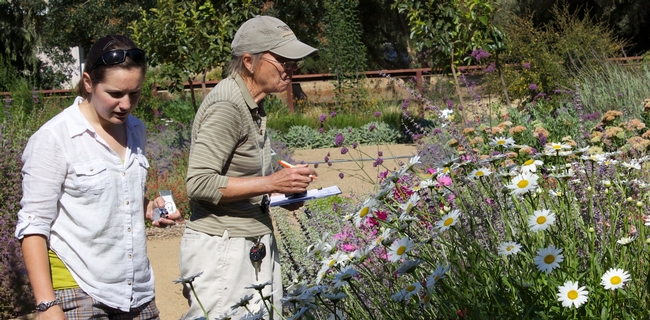This summer I have had the joy of being an intern at the Honey Bee Haven. It seems quite unfair that many students were taking summer classes or holed up in labs while I got to be outside working in a beautiful garden!
If you have visited the garden recently, you will have noticed the multitude of new plants signs. Updating the signs has been a summer-long project that started during my first week at the Haven. Back in June, Chris showed me around the garden and had me take notes on what plant signs we needed to add to the garden. I come from a botanical background, so I thought I knew plants, yet I found myself having trouble connecting the plants in the garden to the plant names I recognized.
In the following weeks, I worked with and among the garden's 250-plus plants, I researched the best bee-friendly plant families, and I drew and painted dozens of flowers for Haven displays. The time flew by and soon enough it was the end of September - time to finish updating and replacing the plant labels. By then, I could easily recognized most of the plant families and individual species. As Chris and I placed signs throughout the garden, I was also reminded of the things I had seen and done throughout the summer. The shasta daisies, yarrows, california buckwheat, and gum plant had become my constant companions through the our survey of natural enemies; the catmint, calamint, and cape balsam were buzzing with honeybees as they had been all summer; and the zinnias were busier than ever with visits from honeybees, native bees, skipper butterflies, and gulf fritillary butterflies.
While I will take away many things from this experience – a special fondness for mantids, an appreciation for combining art and science, and a much greater knowledge of plant and bee biology – my greatest take away will be the genuine interest and excitement of the people that I met in the garden. All garden guests, energetic children to master gardeners, were always happy to learn something new and share their garden experience. The garden is a wonderful place to let your imagination run wild whether you're seeking out cool critters or new garden ideas.
Overall, I have come to realize that, to be a good gardener you have to understand and appreciate insects, and to be a good entomologist you have to understand and appreciate plants. So being a gardening entomologist certainly has its advantages!

